Dans ce post, nous vous indiquons l’action spécifique de chaque vitamine ainsi que les aliments qui peuvent vous les fournir. Dans les paragraphes « Aliments riches en… », ces derniers sont mentionnés par ordre décroissant d’après leur teneur en l’élément concerné.
Les vitamines sont des substances indispensables à l’organisme et dont celui-ci ne peut effectuer la synthèse. Bien que présentes en quantités minimes, elles assurent de nombreuses fonctions essentielles.
Caractéristiques des vitamines :
- Elles ne peuvent pas être fabriquées par l’organisme.
- Elles ne peuvent se remplacer mutuellement.
- Elles n’apportent aucune calorie.
- Elles agissent en très petite quantité.
- Elles sont totalement indispensables au fonctionnement de l’organisme.
- Leur carence provoque des troubles pouvant engendrer des maladies mortelles.
La vitamine A
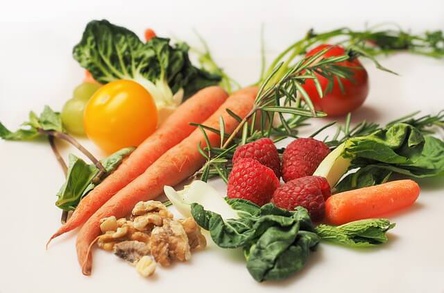
Également appelée axérophtol ou rétinol, elle est liposoluble et hydrosoluble. Elle est sensible à la lumière et vite oxydée en contact avec l’air. On la trouve dans les aliments d’origine animale, sous une forme appelée rétinol qui peut être directement assimilée et utilisée par le corps. Mais on la trouve également dans les végétaux qui renferment une très vaste famille appelée : les caroténoïdes. Certains de ces caroténoïdes ont la propriété de donner naissance dans l’organisme à la vitamine A et ils sont dès lors appelés provitamine A. Le plus connu, car le plus répandu et le plus efficace est le bêta-carotène.
La vitamine A et la provitamine A sont des antioxydants très puissants qui renforcent le système immunitaire et luttent contre les affections dégénératives. La vitamine A est antiseptique, cicatrisante et ophtalmique. Elle joue un rôle fondamental dans le processus de vision, intervient dans la formation du squelette (avec la vitamine D) et favorise la cicatrisation des plaies (avec les vitamines B2 — B5 et D). Elle prévient les infections (principalement respiratoires), optimalise les traitements des maladies de peau (acné, impétigo, psoriasis, etc.) et maintient son élasticité.
La carence en vitamine A produit des symptômes comme : la nyctalopie (défaut de vision nocturne), la sécheresse de la peau, la kératinisation, l’atrophie des glandes sudoripares, la desquamation de l’épithélium génito-urinaire, la formation de calculs du rein plus quelques signes non spécifiques tels que : l’anorexie, retards de la croissance et du développement. En plus de cette action sur la peau, la vitamine A possède un effet antioxydant et immunologique qui est très important dans la prévention du cancer.
Besoins journaliers : estimés entre 0,5 et 1 mg.
Aliments riches en vitamine A et en provitamine A :
— le rétinol : il est présent dans les huiles de foie de poissons, le foie, les matières grasses des laitages et les œufs.
— le bêta-carotène : il est présent dans les abricots secs, les pêches sèches, les patates douces, les carottes crues, le chou cavalier, le chou frisé, les épinards crus, les abricots crus, la citrouille, le cantaloup, les feuilles de betteraves cuites, les courges d’hiver, la laitue romaine, le pamplemousse rose, la mangue, les laitues diverses, le brocoli cuit, les choux de Bruxelles, le pissenlit, le cerfeuil, le potiron, le persil, les bettes et les légumes verts en général, les autres choux, la chicorée, le melon et les autres fruits aux couleurs rouge-orangé…
La thiamine
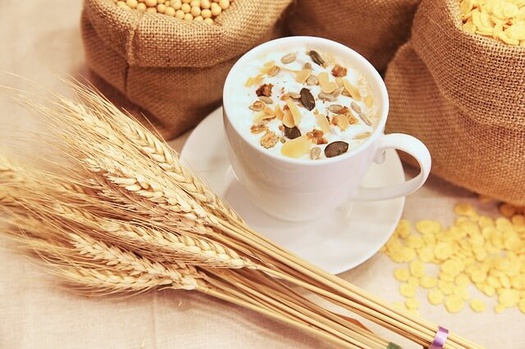
Il s’agit de la vitamine B1, aussi appelée aneurine, qui est hydrosoluble, sensible à la lumière et à la cuisson à l’eau bouillante et à la vapeur.
Elle réduit les effets nocifs du stress et influence favorablement le moral. Elle agit sur le métabolisme des glucides et des graisses dont l’énergie ne peut être utilisée que grâce à la vitamine B1. Elle améliore la transmission de l’influx nerveux et agit sur l’humeur. Elle protège le système cardio-vasculaire et les artères.
Besoins journaliers : estimés à 1 mg pour les enfants et à 1,8 mg pour les adultes. Ces doses recommandées doivent être augmentées sensiblement en cas d’allaitement, de grossesse, et chez les fumeurs.
Aliments riches en thiamine : Levure de bière, céréales germées, flocons, son, riz complet, fruits et légumes secs, viandes, volailles et foies d’animaux, poissons, jaune d’œuf, épinards, noix, pois, avocats.
La riboflavine

Aussi appelée vitamine B2, c’est une vitamine hydrosoluble, sensible à la lumière surtout solaire (UV) et qui résiste à la chaleur, à l’acide et à l’oxydation. Elle n’est pas stockée par l’organisme et doit donc être directement puisée dans l’alimentation.
Elle favorise la transformation des glucides, des graisses et des protéines en énergie vitale, et permet donc un regain de tonus. Elle est également antiulcéreuse, antispasmodique et antidermatosique. Elle est utile au fonctionnement de l’oeil et à la fonction de la vision. Elle possède également une action ciblée sur les affections de la bouche, des lèvres ou de la langue.
Besoins journaliers : estimés à 0,8 mg pour les enfants et à 1,8 mg pour les adultes. Ces doses recommandées doivent être augmentées jusqu’à 100 mg en cas de stress, d’allaitement, de grossesse, de contraception, et chez les fumeurs.
Aliments riches en riboflavine : Levure alimentaire, céréales germées, germe de blé, roquefort, asperges, brocolis, épinards, champignons, soja, laitance de poisson et poissons gras, amandes, châtaignes, laitages, œufs, foie, abats.
La niacine
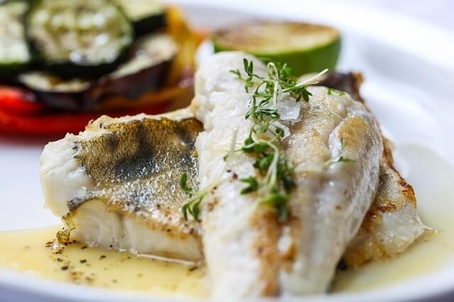
Il s’agit de la vitamine B3, aussi appelée vitamine PP ; elle est la plus stable des vitamines. Elle est en effet insensible à l’air, à la chaleur, à la lumière et à l’acide.
Elle joue un rôle crucial dans la production d’énergie, dans la transmission de l’influx nerveux, dans la synthèse des acides gras et de certaines hormones. Tranquillisante, antidépressive et antimigraineuse, elle est utilisée pour lutter contre les troubles mentaux (instabilité émotionnelle, complexe de persécution, sentiment d’insécurité) allant jusqu’à la schizophrénie.
Elle joue un rôle préventif dans les maladies cardio-vasculaires (favorise le transport de l’oxygène) et améliore le métabolisme des graisses dans le sang.
Elle intervient dans le processus de digestion et prévient certains troubles gastro-intestinaux (mais en plus antidiarrhéique).
Besoins journaliers : estimés à 13 mg pour les enfants et à 20 mg pour les adultes. Ces doses recommandées doivent être augmentées sensiblement en cas d’allaitement, de grossesse et en cas d’hypercholestérolémie où l’on recommande des doses de 300 à 600 mg par jour.
Aliments riches en niacine : Levure alimentaire, germes de blé, amandes, noisettes, abricots, pain complet, foie, abats, viandes blanches, œufs, poissons, dattes, figues, prunes, avocat, beurre de cacahuètes, café torréfié.
L’acide pantothénique
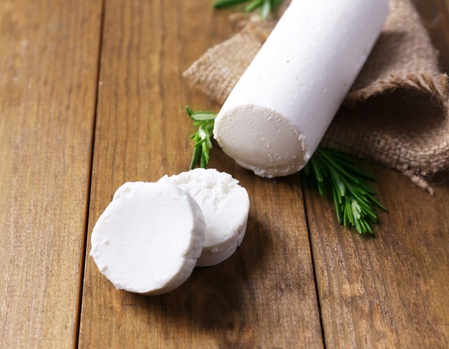
C’est la vitamine B5. Elle est l’une des plus importantes de ce groupe. Elle est hydrosoluble et détruite par la cuisson à sec ainsi que par le raffinage des céréales.
Elle est essentielle à la production d’énergie à partir des graisses et des glucides et intervient dans la formation des hormones corticosurrénales. Elle permet de mieux résister au stress, à la fatigue et aux infections (en participant à la synthèse des anticorps). Ses effets bénéfiques touchent particulièrement les épithéliums, donc la peau (mycose, herpès) dont elle favorise la cicatrisation. En association avec la vitamine B8, elle renforce les cheveux et les ongles. Elle est antiallergique, antiasthmatique, antipsoriasique et tranquillisante.
Besoins journaliers : estimés à 10 mg.
Aliments riches en acide pantothénique : Céréales germées, levure alimentaire, jaune d’œuf, champignons, légumes verts, gelée royale d’abeilles, légumineuses, roquefort, saumon, truite, pain complet, céréales complètes, noisettes, haricots secs, viandes blanches, abats.
La pyridoxine
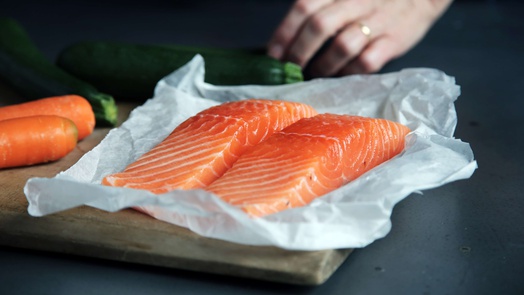
Il s’agit de la vitamine B6 qui est hydrosoluble, sensible à la lumière et détruite par la cuisson à grande eau et le raffinage.
Elle intervient dans la dégradation et la synthèse des protéines et des acides aminés. Elle participe au métabolisme des acides gras, mais joue également un rôle important dans la conversion du glycogène en glucose et donc fournit de l’énergie à l’organisme. Elle régénère les globules rouges et la peau (acné). Elle augmente la production d’anticorps et renforce donc le système immunitaire ainsi que le système nerveux. Elle est sans conteste liée à tous les symptômes de la sphère hormonale féminine tels que le syndrome prémenstruel, la grossesse (nausée) et la prise de pilules contraceptives.
Besoins journaliers : estimés sont de 1 mg pour un enfant et de 2,5 mg pour un adulte.
Aliments riches en pyridoxine : Levure alimentaire, céréales germées et complètes, raisins, cerises, amandes, noix, noisettes, légumes secs, choux, soja, épinards, viandes, volailles, abats, jaune d’œuf.
L’inositol
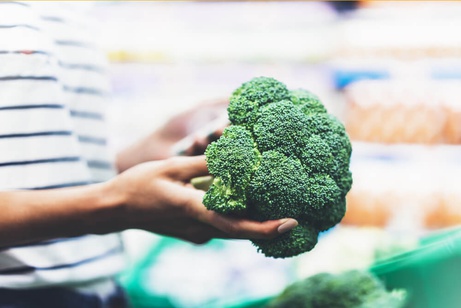
Il s’agit de la vitamine B7.
Elle est présente en quantité importante dans le cœur, le cerveau, l’humeur aqueuse de l’œil et elle possède des propriétés physiologiques importantes dans le fonctionnement de ces organes. Elle abaisse le taux de cholestérol et régule le diabète. Elle prévient la chute des cheveux et en assure la bonne santé. Elle s’avère utile dans l’eczéma.
Besoins journaliers : estimés à 1 g par jour
Aliments riches en inositol : Céréales complètes, lécithine, germes de blé, levure alimentaire, abats, foie, choux-fleurs, petits pois, haricots, arachides, noisettes, soja, fruits acides, raisin.
La biotine
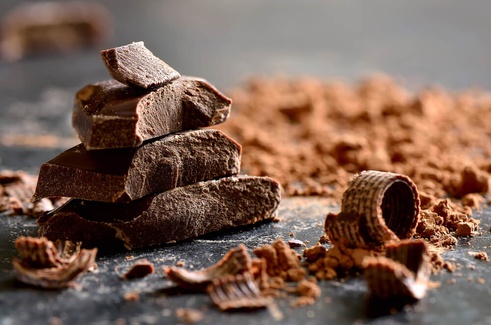
Il s’agit de la vitamine B8, encore appelée vitamine H. Détruite par la cuisson, elle est cependant l’une des vitamines B les plus stables.
Elle participe au métabolisme des protéines, des acides aminés, des graisses et des hydrates de carbone pour fournir de l’énergie à l’organisme. Elle est antiacide et hypolipidémiante.
Utile contre certains troubles nerveux et cutanés (acné), elle freine la chute des cheveux et stimule aussi le système immunitaire en général.
Considérée comme antidermatosique, la biotine permet de lutter contre un grand nombre de problèmes dermatologiques (acné, séborrhée, eczéma, etc.).
Besoins journaliers : de l’ordre de 1 mg pour un enfant et de 2,5 mg pour un adulte, mais une grande partie de ses besoins est fournie par les bactéries intestinales
Aliments riches en biotine : Levure de bière, lait, riz complet, abats, fruits, noix, œufs crus.
L’acide folique
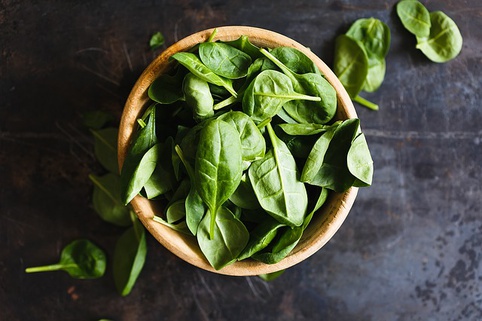
Il s’agit de la vitamine B9, indispensable au bon fonctionnement de l’organisme, qui est hydrosoluble, sensible à la lumière et à la cuisson.
Elle aide à la synthèse de l’ARN et de l’ADN. Elle est utile dans les cas d’anémie, car elle participe à la synthèse des globules rouges, de l’hémoglobine (en relation avec la vitamine B12). Elle est utile en cas de troubles émotionnels. Elle présente de très nombreuses propriétés : antiasthénique, antidépressive, antidermatosique, antidiarrhéique, antigoutteuse, antiostéoporotique, antiulcéreuse, hypolipidémiante, immunostimulante. Elle protège contre les parasites intestinaux et les empoisonnements et retarde le blanchissement des cheveux (en relation avec la vitamine B5).
Besoins journaliers : estimés entre 0,4 et 0,8 mg.
Aliments riches en acide folique : Le leader incontesté est le foie de poulet cuit. Ensuite, bulghur cuit, oranges, bananes, épinards frais, haricots blancs cuits, haricots rouges cuits, haricots de soja cuits, germes de blé, pain complet, asperges fraîches cuites, feuilles de navet fraîches cuites, avocat, choux de Bruxelles, haricots de Lima, pois chiches, lentilles, soja, graines de tournesol, brocoli frais, feuilles de moutarde, betteraves fraîches, levure alimentaire, légumes verts, carottes, abricots, maïs, amandes, châtaignes, blé complet, autres foies, jaune d’œuf, lait, ris de veau.
Le paba
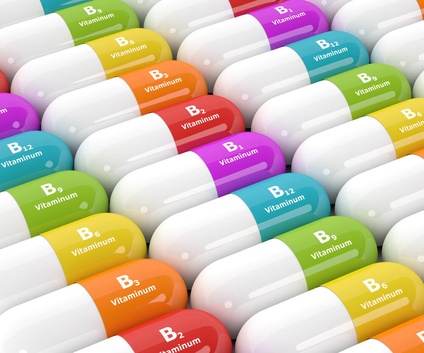
Il s’agit d’une autre vitamine du groupe B, la vitamine B10.
Elle combat la dépigmentation de la peau, les cheveux grisonnants, et prévient les rides. Elle favorise la fertilité et ralentit le vieillissement. Elle aide à la bonne santé de la peau et possède des propriétés antioxydantes qui protègent les cellules contre les méfaits des radicaux libres.
Elle contribue à une bonne santé en général et intervient comme cofacteur dans le complexe vitaminique B.
Besoins journaliers : ils semblent s’élever à 50 ou 100 mg par jour.
Aliments riches en paba : Levure diététique, céréales complètes, germes de blé, légumes, foie, œufs.
La cobalamine
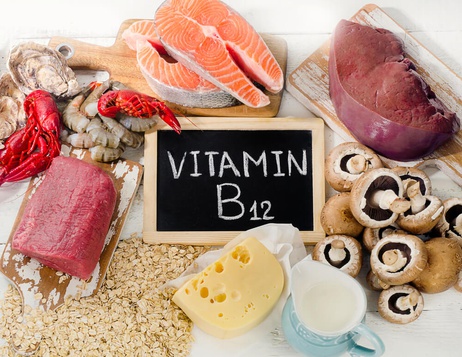
Il s’agit de la vitamine B12, qui est hydrosoluble, sensible à l’air, à la lumière et à la chaleur. Comme toutes les vitamines du groupe B, elle est détruite par l’alcool et synthétisée en partie par les bactéries intestinales.
Elle est indispensable à la synthèse et à la régénération des globules rouges, à l’assimilation du fer et, de ce fait, représente un puissant antianémique. Elle est nécessaire à la synthèse de l’ADN et à la santé du système nerveux. Souvent utilisée chez les enfants pour stimuler l’appétit et la croissance et chez le vieillard comme tonique.
Besoins journaliers : de 3 à 4 mcg.
Aliments riches en cobalamine : Les algues klamath et spiruline, levure de bière, sauce au soja, produits laitiers, viandes, poissons gras, fruits de mer, crustacés, abats, œufs.
La choline
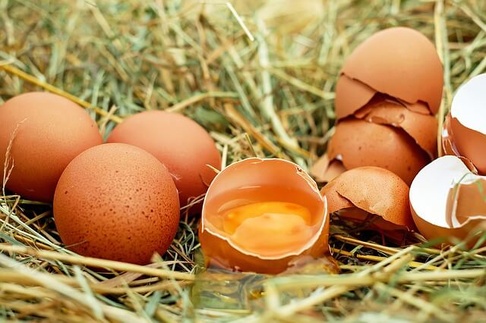
Il s’agit d’une vitamine du groupe B très répandue dans le règne végétal et animal (jaune d’œuf). Elle est détruite par l’eau, la cuisson, le raffinage, un stockage inapproprié de la nourriture et l’alcool.
Elle régule le taux de cholestérol, aide à la bonne santé du foie et maintient les processus liés à la mémoire tout en en maintenant la qualité et en en évitant les pertes, elle facilite les transmissions nerveuses. Elle protége le foie et les vaisseaux du dépôt des graisses, contrôlant ainsi les taux de cholestérol. En protégeant le foie, elle intervient au niveau de l’élimination des substances toxiques.
Elle est dotée d’effet calmant.
Besoins journaliers : 1 g par jour.
Aliments rches en choline : Germes de blé, lécithine de soja, légumes verts à feuilles, œufs, poissons, fruits secs et abats.
La vitamine C (acide ascorbique)
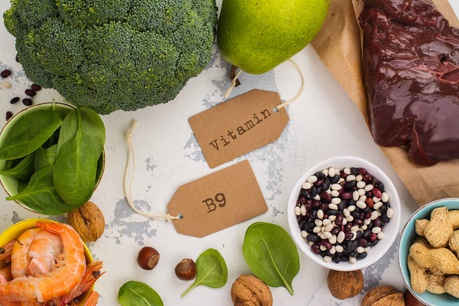
Indispensable à la vie, c’est la plus fragile des vitamines, elle ne résiste ni à l’air, ni à la lumière, ni à la chaleur. Elle est hydrosoluble. Elle présente des actions aussi efficaces que diverses.
Son action antitoxique est à mettre au premier plan : détoxifiante puissante, elle combat l’effet néfaste des métaux lourds : plomb, fer, cuivre, cadmium, mercure, arsenic, aluminium, des pesticides : DDT, lindane, etc., du benzène, des médicaments et des toxines microbiennes. Seule substance capable de nous protéger de la pollution de l’air, elle inactive l’oxyde de carbone (CO) et le dioxyde de soufre (S02).
Elle empêche également la formation de nitrosamines cancérigènes, à partir des nitrates et des nitrites présents dans l’alimentation. Elle renforce efficacement le système immunitaire et les défenses de l’organisme par stimulation de la phagocytose. Elle accélère la guérison de toutes les affections qu’elles soient virales ou bactériennes. Elle possède une action anti-infectieuse. Elle est très active dans les cas de dépression.
Antistress, elle permet à l’organisme de mieux s’adapter aux brusques changements de l’environnement. Vitamine de l’effort, elle a une action protectrice sur les os, les muscles, les articulations et le tissu conjonctif. Elle renforce les disques intervertébraux, et permet de lutter contre les lombalgies consécutives à une usure de ces derniers. Elle améliore la fixation du fer = anti-anémique.
Grâce à sa puissante action anti-oxydante, elle s’oppose aux méfaits des radicaux libres. À doses élevées et fractionnées, elle est considérée par de nombreux chercheurs comme anticancéreuse.
Nous estimons que pour obtenir un effet d’entretien efficace, la dose quotidienne doit s’élever à 1000 mg. En cas de maladie infectieuse, virale, cancéreuse…, vous pouvez sans crainte élever cette dose jusqu’à 4000 mg par jour.
Besoins journaliers : entre 500 mg et 4000 mg, en fonction du mode de vie.
Aliments riches en vitamine C : Acérola, goyave, poivron rouge, cantaloup, piment, poivron vert, papaye, fraises fraîches crues, choux de Bruxelles, kiwi, orange, tomate, jus de tomate, pamplemousse, brocoli cru, chou-fleur cru, pois verts crus, chou frisé cuit, autres fruits rouges (framboise, groseille, cassis), autres agrumes, pomme de terre, légumes verts à feuilles, persil, asperges, autres choux.
Nous vous conseillons vivement de manger le plus possible de végétaux crus afin d’éviter la destruction de cette vitamine par la chaleur.
La vitamine D
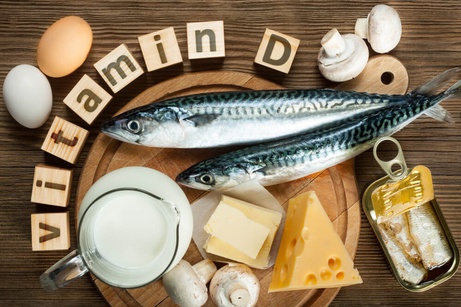
C’est une vitamine liposoluble qui est synthétisée par les rayons UV du soleil à partir du cholestérol de la peau. La vitamine D est stockée dans le foie principalement.
Elle assure relaxation et détente, mais elle est avant tout indispensable à la formation et à la résistance du squelette et des dents ; elle est également anti-infectieuse et antiallergique.
D’une aide précieuse dans l’assimilation de la vitamine A, associée à cette dernière ainsi qu’à la vitamine C, elle est très efficace afin d’éviter les refroidissements
Besoins journaliers : 400 à 2000 UI.
Aliments riches en vitamine D : Anguille, sardine fraîche, hareng frais, saumon rouge, saumon rose, maquereau, thon, tous les poissons gras, huiles de foie de poisson, lait cru, graines germées, jaune d’œuf, foie de bœuf, de mouton, de porc, beurre, quelques champignons et légumes verts.
Pour qu’elle soit synthétisée et potentialisée au sein de l’organisme, il est indispensable de bénéficier de la lumière directe du soleil.
La vitamine E
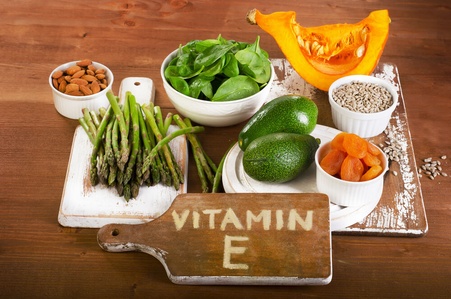
C’est une vitamine liposoluble, sensible à la lumière, à l’air et à la chaleur.
Le plus puissant des antioxydants et le plus gros piégeur de radicaux libres, elle protège les globules rouges, les cellules et les tissus, s’oppose au vieillissement cellulaire et renforce le système immunitaire. Elle s’avère bénéfique pour le cœur et les problèmes de circulation (vasodilatateur).
Comme de nombreux autres antioxydants, elle protège de la pollution et des substances toxiques (comme certains additifs alimentaires utilisés dans la conservation).
Elle contribue à la production d’énergie de l’ensemble de l’organisme et agit contre la fatigue.
Besoins journaliers : 10 à 20 UI par jour.
Aliments riches en vitamine E : Noix et graines : graines de tournesol, noix de Grenoble, amandes, noix de cajou, arachides, noix du Brésil.
Son et légumineuses : germes de blé, haricots de soja secs, son de riz.
Huiles : huile de germes de blé, huile de soja, huile de maïs, huile de tournesol.
Autres germes de céréales, œufs, crème du lait, épinards, asperges, concombre, céleri, soja, choux, céréales complètes, légumes verts à feuilles, tomates, autres fruits secs, autres oléagineux.
La vitamine K
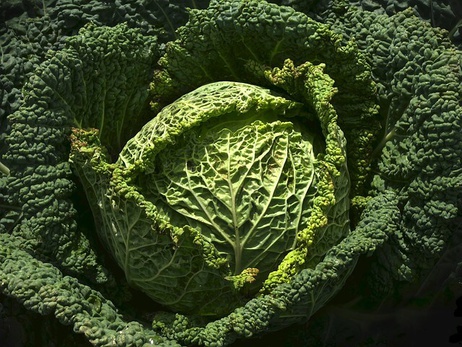
C’est une vitamine liposoluble. Elle est indispensable à la synthèse de certains facteurs de coagulation dans le foie et assure une bonne coagulation sanguine
Besoins journaliers : estimés entre 300 et 500 mcg.
Aliments riches en vitamine K : Graines de luzerne germées, choux, épinards, légumes verts à feuilles, tomates, carottes, betteraves, soja, foie, laitages, huiles végétales polyinsaturées, huiles de foie de poisson, algues marines.
Si vous consommez de jeunes pousses de céréales, sachez que 1 g suffit à vous apporter la dose nécessaire de cette vitamine.



